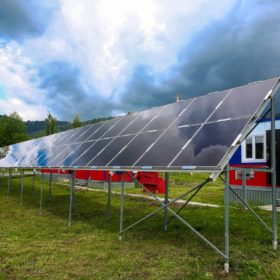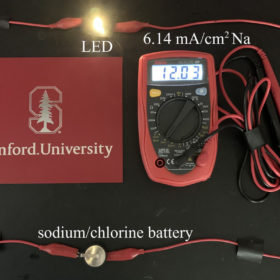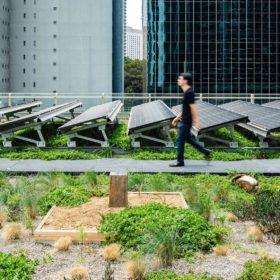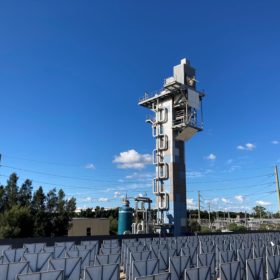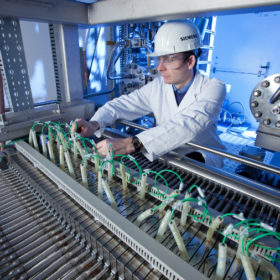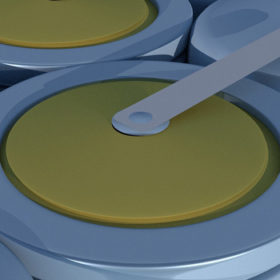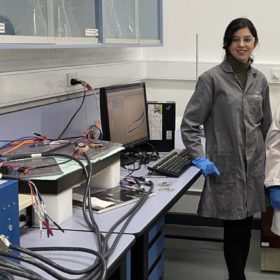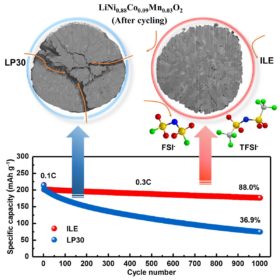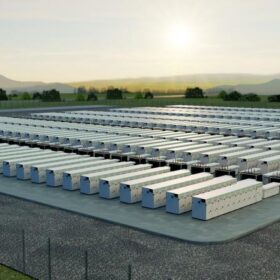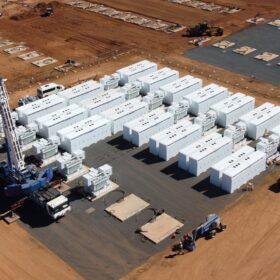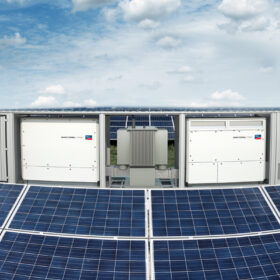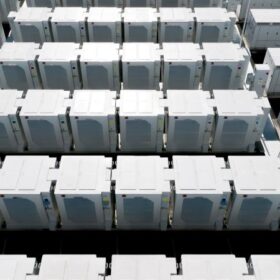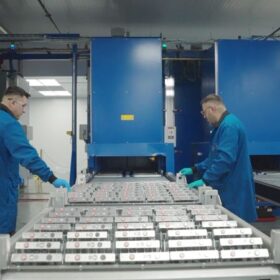Measuring impacts on solar performance, whatever the weather
Scientists in the United States used machine learning to analyse maintenance reports, performance data and weather records from more than 800 solar farms located across the country. The analysis allowed them to determine which weather conditions have the biggest impact on PV generation, and to suggest the most effective ways to boost the resilience of PV installations to extreme weather events.
Novel battery chemistry for zinc-ion batteries
Scientists have demonstrated a zinc-ion battery that overcomes many of the challenges for this technology. By working with a highly-concentrated salt solution as the electrolyte, the group was able to achieve stability over more than 2,000 cycles combined with a strong electric performance. The group says that its work opens up “a viable route to developing aqueous batteries for emerging electrochemical energy storage applications.”
New alkali metal-chlorine battery promises 6x energy density
Scientists in the U.S. discovered a promising new battery chemistry based on chlorine and table salt. Batteries based on this chemistry can achieve at least six times the energy density of today’s lithium-ion batteries, according to the group that created it. The prototype battery could already be suitable for small devices such as hearing aids, and with further work could be scaled up to larger applications.
Green roof improves solar panel efficiency by 3.6% on average, study finds
The comparison of two solar cladded roofs in Sydney, one bare beneath its panels and the other adorned with native grasses and plants, has found the panels on the green roof were, on average, 3.63% more efficient, producing an average daily output 13% greater than the conventional roof. The improvements are believed to stem from the lower temperatures on the green roof, thanks to its plants – which also provided a plethora of additional benefits.
CSIRO commits to net zero emissions target
Australia’s Commonwealth Scientific and Industrial Research Organization plans to use its Newcastle Energy Centre – home to the largest high-concentration solar array in the Southern Hemisphere – as a demonstration site for its newly announced net-zero emissions targets.
Australian scientists set out to use wastewater for green hydrogen electrolysis
Australia has the sun, the wind and the space to become one of the world’s green hydrogen export superpowers in coming decades. However, the Sunburnt Country does have a dearth of one ingredient in the green hydrogen equation – freshwater. Thankfully, researchers from Monash University and a group of national water utilities are joining forces to find a way to use wastewater for the process of electrolysis.
ANU researchers claim 29% efficiency world record for bifacial solar cell
Researchers at The Australian National University claim to have set a world record for bifacial solar PV cell efficiency that they say could boost the energy output of solar farms by 30%.
Monash chemists find novel salt solution for lithium-ion battery fires
Researchers at Monash University have published a new study in which high voltage lithium batteries, such as those used in electric vehicles and grid scale energy storage systems, are tested with a novel lithium salt shown to be far less hazardous than current conventional materials.
Melbourne PhD students pioneering new method of recycling li-ion batteries
Three PhD students from Melbourne are moving their research into recycling lithium-ion batteries from the labs into pitch meetings, vying to become one of the first companies in Australia to recover the metals and minerals from spent batteries. Their method, they say, is simpler, less toxic and more cost competitive than those widely used.
Lithium-metal battery with capacity retention of 88% over 1000 cycles
German scientists have applied a new combination of cathodes and electrolytes to improve the stability of lithium-metal batteries. They fabricated a device with an energy density of 560 watt-hours per kilogram and a Coulombic efficiency of 99.94%.
